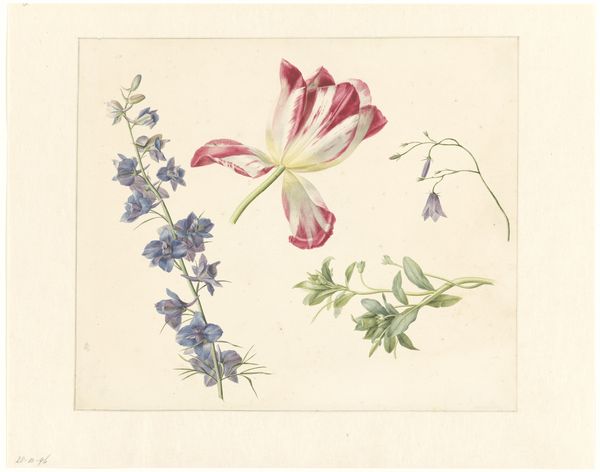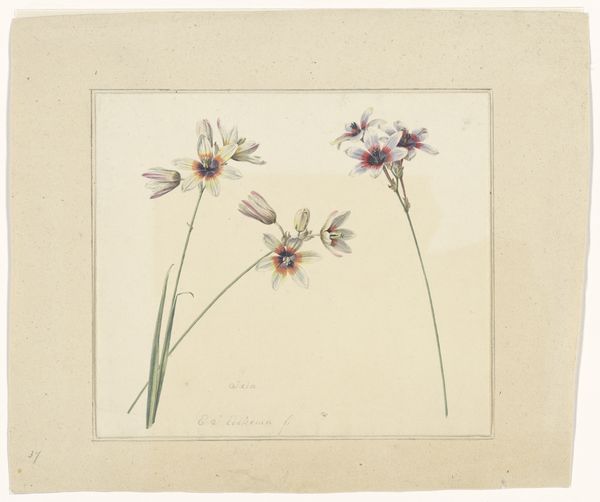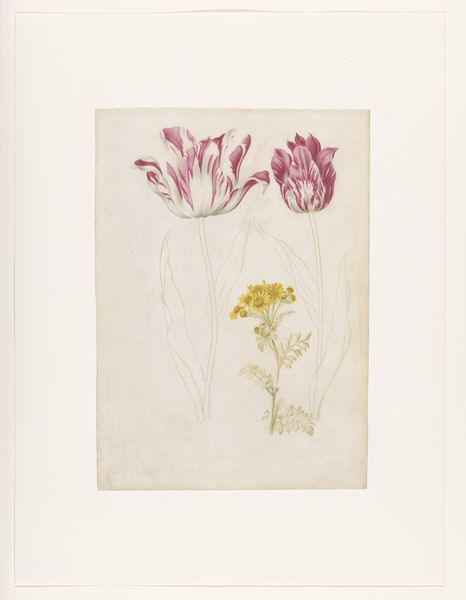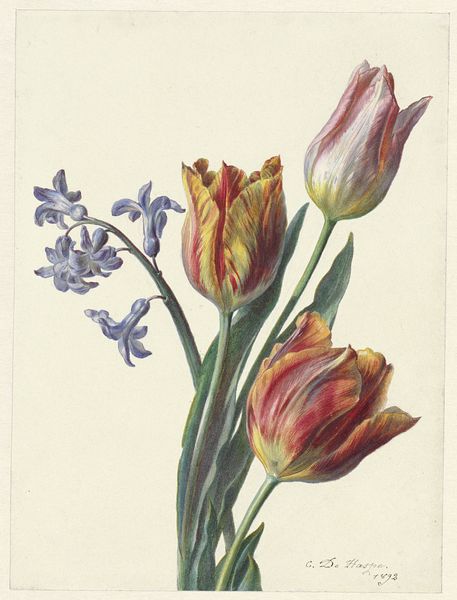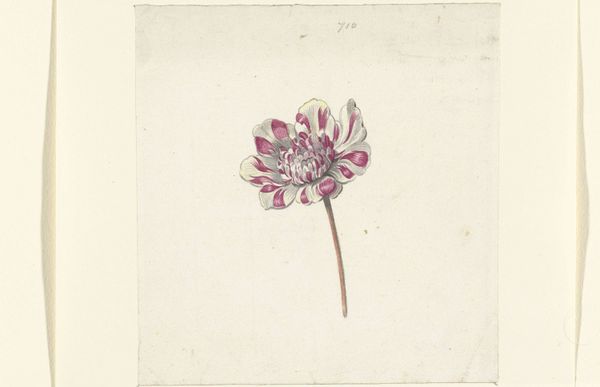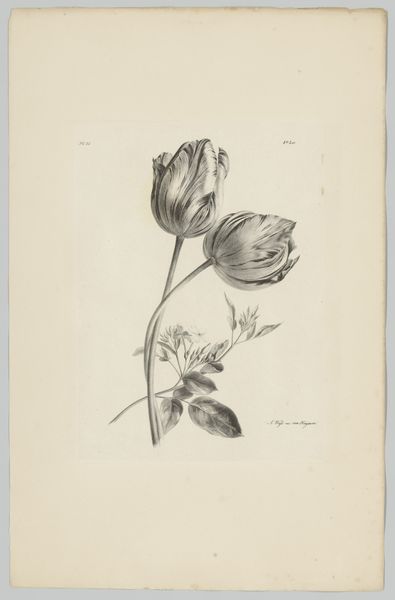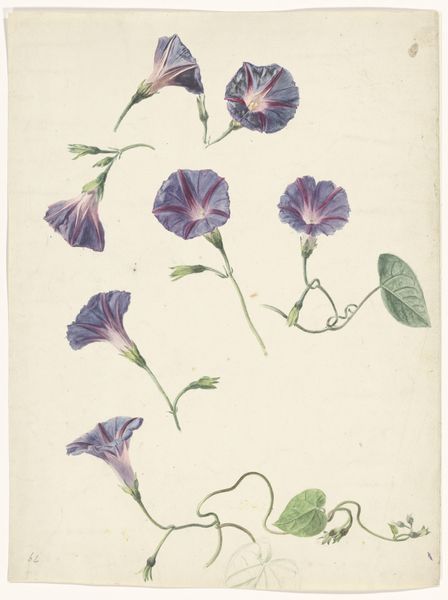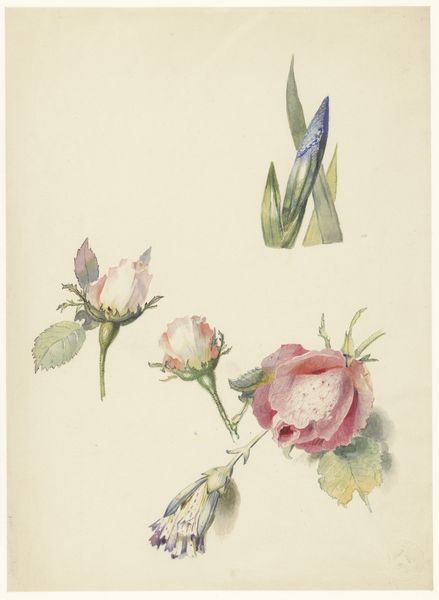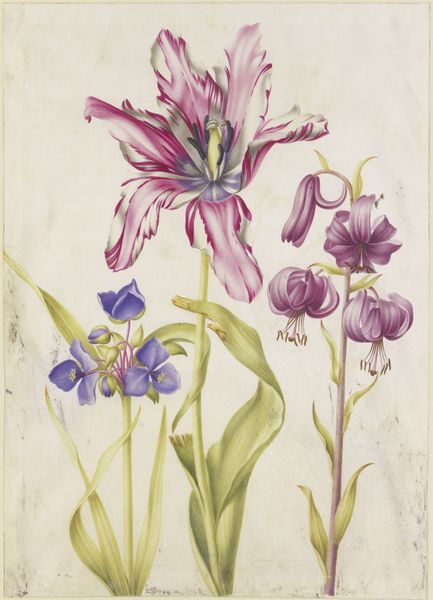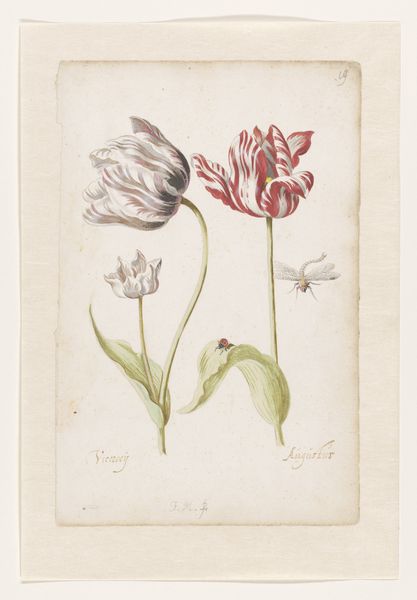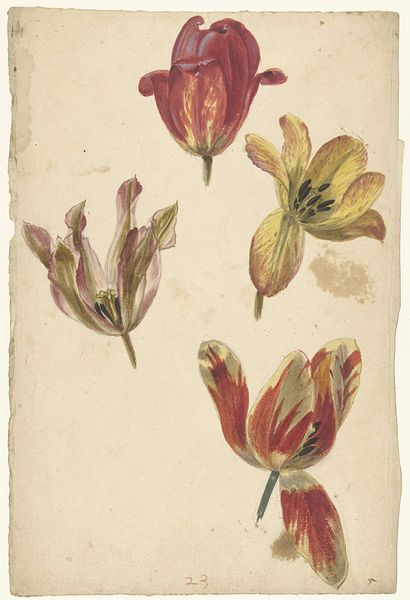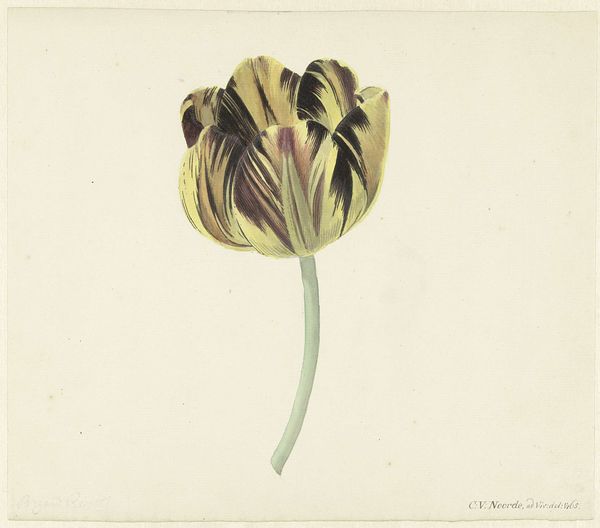
painting, watercolor
#
portrait
#
painting
#
watercolor
#
botanical photography
#
romanticism
#
botanical drawing
#
botanical art
#
watercolor
Dimensions: height 239 mm, width 235 mm
Copyright: Rijks Museum: Open Domain
Editor: This watercolor, "Tulpen," by Eelke Jelles Eelkema, made sometime between 1815 and 1830, is quite lovely. It strikes me as a rather straightforward botanical study, yet the varying angles and the delicate brushstrokes give it a certain elegance. What do you see in this piece? Curator: I see a reflection of the intense fascination with botany that swept through Europe, particularly the Netherlands, during the Romantic period. But more than just documentation, botanical art of this era often intersected with burgeoning ideas of national identity and economic power. Editor: National identity? Economic power? In a picture of tulips? Curator: Absolutely! Think about the Dutch Golden Age tulip mania. These flowers weren't just pretty; they were potent symbols of wealth and status. Eelkema, even decades later, is participating in that cultural narrative, albeit in a transformed context. His detailed study almost feels like a reclaiming of that past glory. Notice how the subtle variations in color and form individualize each flower. What do those specific choices suggest to you? Editor: Well, now that you mention it, each tulip does seem to possess a unique character, like individual portraits. Maybe he’s hinting at the complexities within even the most familiar symbols. Curator: Precisely! And consider the scientific method itself, the very act of classifying and ordering the natural world. It can be viewed as a form of control, a way of imposing human will onto the environment. "Tulpen," in its apparent simplicity, quietly engages with those complex power dynamics. It is a representation but also an assertion of cultural significance and dominance through botanical mastery. Editor: I never thought a floral watercolor could be so loaded. I appreciate your perspective! Curator: Likewise. It’s in these dialogues that we begin to see the art historical implications embedded within art itself.
Comments
No comments
Be the first to comment and join the conversation on the ultimate creative platform.
